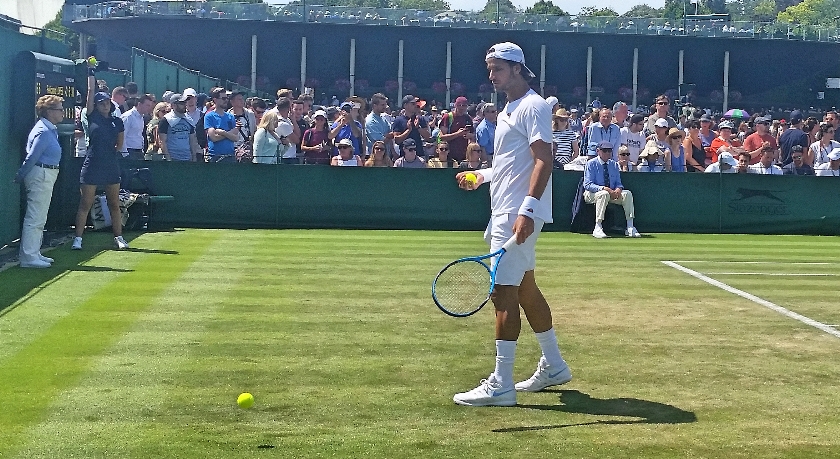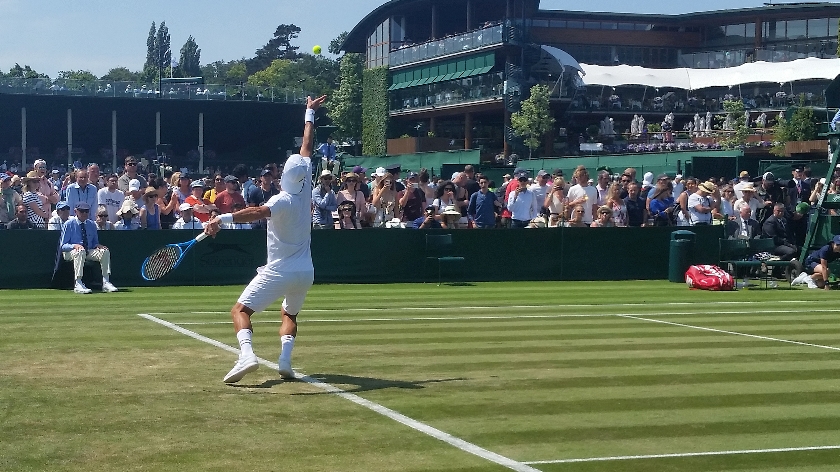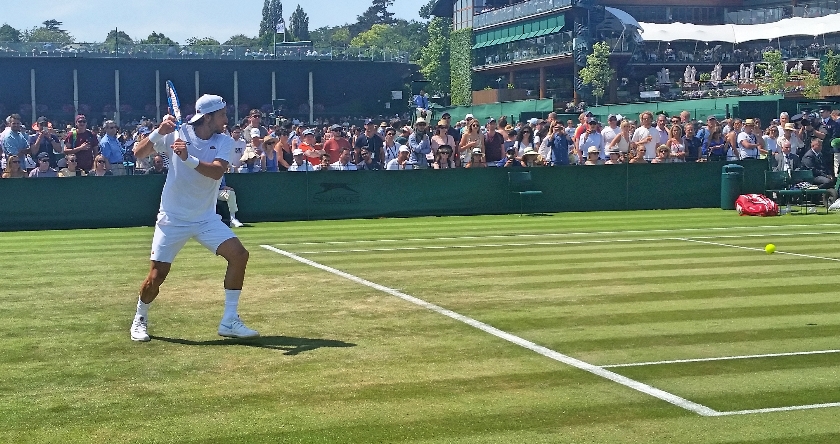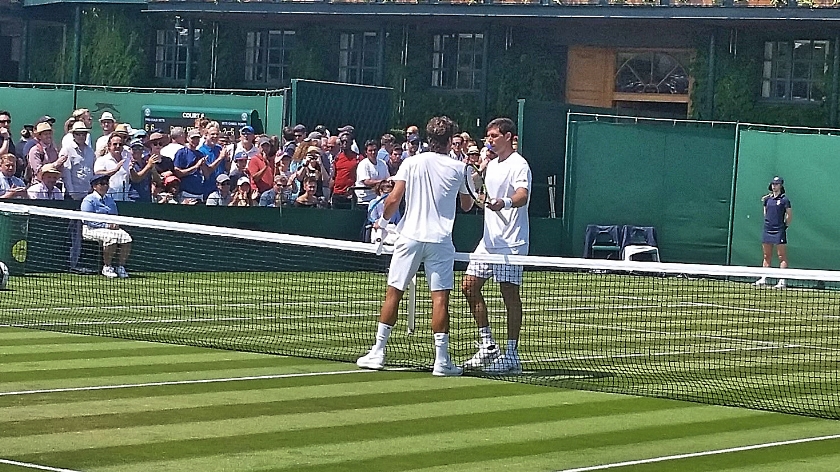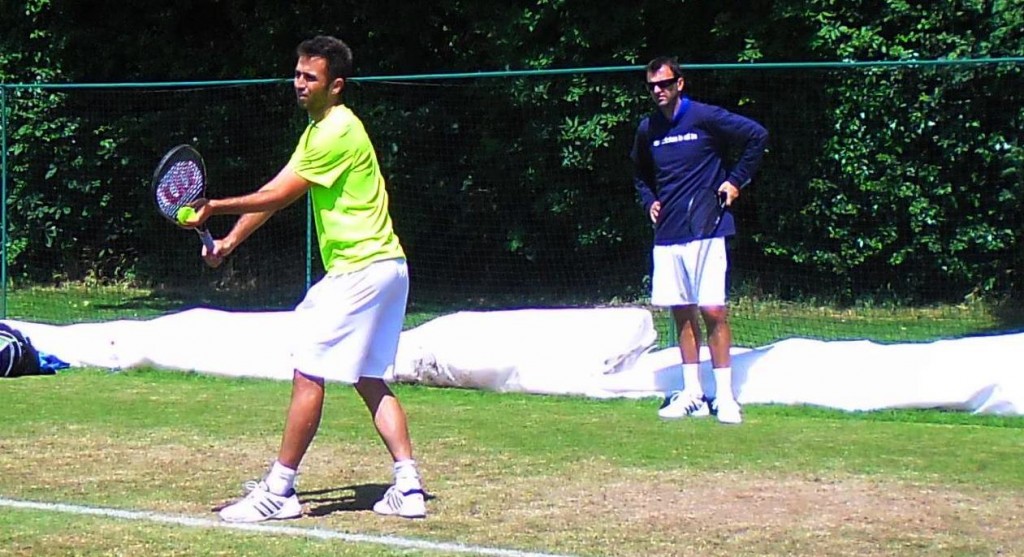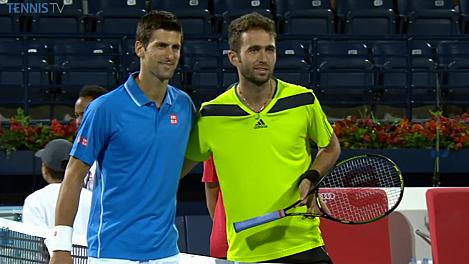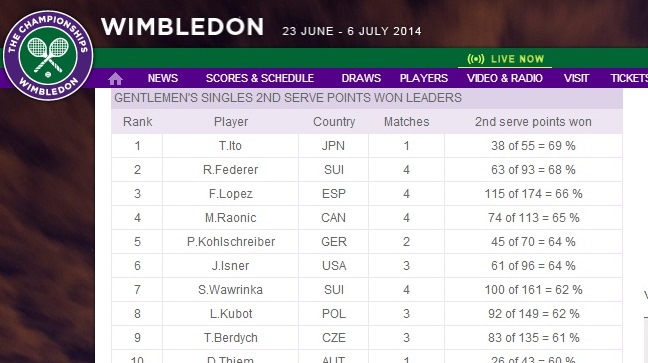Feliciano Lopez def. Federico Delbonis 6-3 6-4 6-2
“It means a lot to me. As I said before, it’s not about reaching this number of the most consecutive Grand Slams played. It’s about being 15 years or more playing at the top level.”
This quote, by the 36-year-old Feliciano Lopez, essentially sums up the man’s accomplishments over the last 21 years. Yes, he turned pro 21 years ago, in 1997.
His was referring to the fact that he broke Roger Federer’s record of consecutive Majors played with his 66th appearance in a row in Majors this morning, when he stepped on to Court 7 to face Federico Delbonis at Wimbledon.
The last time Feliciano Lopez did not play a Major, in the 2002 Australian Open, Lleyton Hewitt was the number one player and Pete Sampras, Yevgeny Kafelnikov, Gustavo Kuerten, Patrick Rafter, Juan Carlos Ferrero, and Andre Agassi were some of the names found in the top 10 of the ATP rankings.
Throughout his streak of 66-straight participations in Majors, Lopez has not acted as a tourist either. He has reached fourth round or better seven times (four-time quarterfinalist) and has consistently been a player that other top players would prefer to avoid in the early rounds. As for his record in five-set matches, Feliciano is 21-10 in Majors and 3-1 in Davis Cup, for a career record of 24-11. This is an athlete who knows what it takes to win, even when he is having a bad day at the office.
The Spaniard is the iron man of tennis. If and when you see him up close, you can judge for yourself. He is a specimen.
Granted, playing Delbonis on grass does not represent the highest order of challenge, but that should not diminish what Lopez put on display today. Unfortunately for Delbonis, Feli had a wonderful day at the office. In fact, everything clicked on all cylinders, except for one game from which he immediately recuperated.
Lopez started the match with an ace, finished the first set with another, and the match with his 19th one. His serve was so effective that, on top of his 18 aces (vs one double fault), he won 93% of points started with his first serve and Delbonis could not return 36 out of 65 of his serves back in the court. Two second-serve aces and a winning percentage of 58% on points started with his second serve were the icing on the cake.
The stats will tell you that he served and volleyed seven times in the match. The reality is that he did it a lot more. It’s just that he did not have to volley. He “approached” the net 20 times, winning 14 of those points.
Impressed yet? That is only half of the story.
He won the majority of baseline rallies, including a 20+-shot rally early in the second set that would have been the envy of most clay-court specialists. He kept Delbonis in check with his deep backhand slices and flat forehands, never allowing the Argentine to dictate rallies with his forehand like he usually prefers to do. Lopez made 21 unforced errors in total, only one more than his opponent who is, by nature, a baseliner. Most of those were on his forehand (16), usually his weaker side.
Beyond the numbers, his forehand was an important part of his win today. He accelerated balls with it whenever he got the chance, earning five direct winners and a ton of low drives that either ended with him winning the point at the net, or forcing Delbonis into errors due to the worry that the Spaniard may follow them up to the net.
Delbonis, for a while, tried to work Feli’s backhand side knowing that, at least, Feli cannot produce winners from that side (he did not, zero for the match). However, that meant Delbonis, being a lefty himself, had to strike down-the-line forehands instead of his preferred sharp, cross-court topspin ones. That also allowed Lopez to use his lefty slice to glide balls deep into corners, making Delbonis add mileage to his legs.
Lopez bided his time during those rallies until the Argentine either went for a risky shot and missed or landed a ball short so that Feliciano could take it on the rise and approach the net with a slice. It worked to perfection. Delbonis was all but resigned in the third set. Lopez, liberated, put on a show. The nightmare ended for Delbonis in a matter of one hour and 29 minutes, by a score of 6-3 6-4 6-2.
I mentioned “one bad game” earlier for Feliciano. It happened when he was serving at 1-0 in the second set, the only game in which he did not put a single first serve in (0 for 5). He also committed his only double fault in it and made three forehand unforced errors. It was a glitch in an otherwise five-star performance. The irony is that Lopez was a perfect 14 for 14 on first-serve points won in that second set. Yet the set included the only break against him in the match. It’s just that he did not get to start any points with his first serve in that game. Stats can be tricky folks.
Let me finish by adding to Feli’s post-match conference quotes. He agreed that the quality of his serves played a key role in his high-level of performance in this match and went on to make enlightening comments about longevity and success on the ATP tour. Here are some highlights:
— On his longevity:
“I think the way I play maybe also. I think I don’t play so many rallies. Also my technique. I play quite easy, so I don’t make a huge effort in every single shot that I play. That’s also important. […] I haven’t, you know, suffered any big injuries in my career. This is the most important thing. And also mentally, I have the strength enough to be, you know, playing so many years (smiling).”
— On breaking Federer’s record of 65 consecutive Majors played:
“Well, when I was [thinking] about breaking the record, I thought, wow, I’m going to beat Federer at something, which is a lot already (laughter).”
— On what the streak represents to him: Lopez said the quote I used to begin this article and added this:
“For me, after 30 years always so important to be competitive and to challenge the best players in the world. This is what I thought at this stage of my career was the most important thing, to stay healthy and to be able to compete against these monsters, because for me I played in the past against other monsters, but after the 30s it was so important for me to stay fresh and healthy, just to challenge these animals, because they are very — the level overall is getting higher and higher in the last decade.” – Only Feli can call his peers “monsters” and “animals” and make it sound as a compliment.
— As to why players today suffer so many injuries, Lopez had an interesting take:
“I don’t know that much about specific things and technique, and probably the twohanded backhand guys have more injuries in the last years. This is something that I realize. I don’t know why. Maybe a doctor can tell you (smiling). But it is true that the two-handed backhand guys have been struggling with injuries lately more than one-handed backhand guys.”
— He also emphasized the idea of mental stress that players experience bleeding into the physicality of the game:
“Also, the stress that these guys they have every single day they compete, because they have to win every day. Also, the mental part is so important that it might be affected, you know, on your body when you step in the court and you have to win every single day […] because they have a lot of, you know, stress. They need to win every day. It’s also something that, I think, something to consider, also.”
— On the evolution of tennis over the course of his career:
“There is no players now that they specialize in one particular surface. I think the game has become more, you know, from the baseline in most of the courts. So when I started playing, it was the clay court players and the grass court and the hard court players. Now everybody plays, you know, more or less the same style, I will say. But the most important, for me, the bigger change was the power in the game.”
Lopez will face the fifth seed Juan Martin del Potro, another Argentine. Without a doubt, it will be a much tougher challenge for Lopez, although Juan Martin, for his part, may experience some of that stress that Feli noted above.
Until next time…

